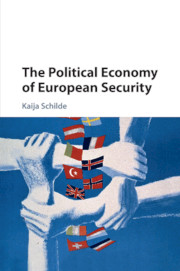Book contents
- The Political Economy of European Security
- The Political Economy of European Security
- Copyright page
- Contents
- Figures
- Tables
- Preface
- Acknowledgments
- Introduction
- 1 The Governing Capacity of the European Union
- 2 Mr. Smith Goes to Brussels
- 3 How Weberian Is the EU?
- 4 The Political Economy of European Defense
- 5 The Political Development of EU Defense
- 6 The Political Development of EU Security
- 7 The Blurring of European Security and Defense
- Bibliography
- Index
- References
Bibliography
Published online by Cambridge University Press: 08 September 2017
- The Political Economy of European Security
- The Political Economy of European Security
- Copyright page
- Contents
- Figures
- Tables
- Preface
- Acknowledgments
- Introduction
- 1 The Governing Capacity of the European Union
- 2 Mr. Smith Goes to Brussels
- 3 How Weberian Is the EU?
- 4 The Political Economy of European Defense
- 5 The Political Development of EU Defense
- 6 The Political Development of EU Security
- 7 The Blurring of European Security and Defense
- Bibliography
- Index
- References
- Type
- Chapter
- Information
- The Political Economy of European Security , pp. 263 - 283Publisher: Cambridge University PressPrint publication year: 2017



